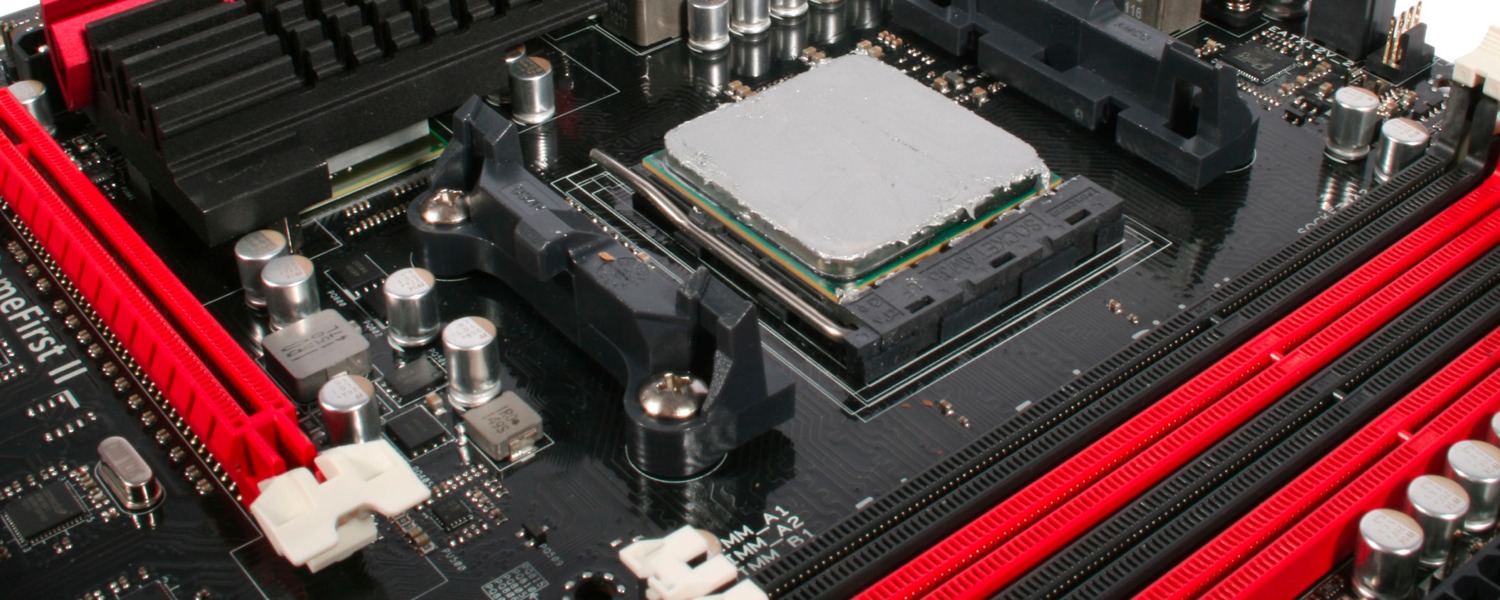It's very easy to be dismissive of AMD's mainstream FX processors based on the Piledriver core. Intel has been beating AMD on every front but price for a couple of generations now, owing at least some of their success to being consistently one generation ahead in manufacturing process technology. Meanwhile, the Bulldozer microarchitecture and its descendants have had an unpleasant uphill climb. Power consumption, performance per clock, it all takes its toll. Arguably AMD doesn't make things better for themselves by releasing the FX-9590 and FX-9370, chips with virtually no overclocking headroom and staggering 220W TDPs. And finally, FX chips still rely on the antiquated 900 series chipsets, which lack support for PCIe 3.0.
Suffice to say, there's a laundry list.
Guest author Dustin Sklavos is a Technical Marketing Specialist at Corsair and has been writing in the industry since 2005. This article was originally published on the Corsair blog.
However, we took a couple of AMD's most popular chips for a test drive and found that things aren't anywhere near as bad as benchmarks might lead you to believe. Quite the opposite.
Sitting in our test bed today is AMD's most popular chip, the FX-8350, as well as their true mainstream champion, the $100 FX-6300. As we've done recently with Intel's Haswell-E and Devil's Canyon parts, today we're doing a power-to-performance test to see just how much power an AMD FX-8350 and FX-6300 consume when faced with gaming and multimedia tasks.
Our testbed consists of:
- CPU: AMD FX-8350 (4 GHz, turbo to 4.2 GHz, 125W TDP)
- CPU: AMD FX-6300 (3.5 GHz, turbo to 4.1 GHz, 95W TDP)
- CPU Cooler: Corsair Hydro Series H100i
- Motherboard: Gigabyte GA-990FXA-UD3 AM3+
- RAM: 16GB (2x8GB) Corsair Vengeance Pro DDR3-2400 CAS11 @ DDR3-2133 CAS11
- RAM: 16GB (2x8GB) Corsair Vengeance Pro DDR3-2400 CAS11 @ DDR3-1866 CAS11
- GPU: Sapphire Tri-X Radeon R9 290X 4GB GDDR5
- SSD: Corsair Force LX 512GB SSD
- PSU: Corsair AX760i 760W
The FX-8350 unfortunately doesn't allow for memory speeds higher than 2133MHz without tweaking the BClk, so we stuck with 2133MHz when testing this chip to prevent any memory bottlenecks. The motherboard choice might seem odd, but the GA-990FXA-UD3 has a staggering number of reviews on Newegg and seems to be the weapon of choice for AMD enthusiasts on a budget. As it turns out, it's a pretty nice board.
One of the benefits of going with an FX series CPU is that the motherboard ecosystem is very mature. While Intel's X99 ecosystem still has a host of issues (many of them stemming from DDR4 compatibility), the 990FX is a fully known quantity. This board just works.
Our FX-8350 topped out at 4.7GHz and 1.475V on the core, and thermals were never an issue with the H100i. The FX-8350 boasts excellent heat transfer and while the heat threshold is substantially lower than on Intel's chips, the FX-8350 just doesn't run very hot.
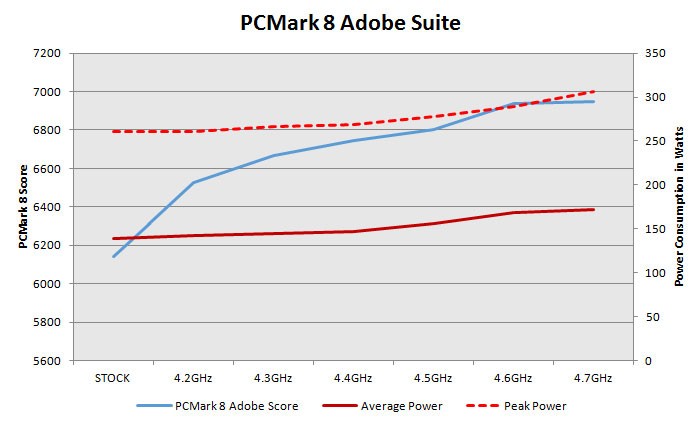
The Adobe suite in PCMark 8 is a godsend for people involved in multimedia work, and the FX-8350 acquits itself well here. The chip gets a solid boost just bumping its core clock up to its turbo clock, and power consumption doesn't increase appreciably. In fact, overclocking all the way to 4.7GHz offers a healthy performance boost without a big increase in power demands.
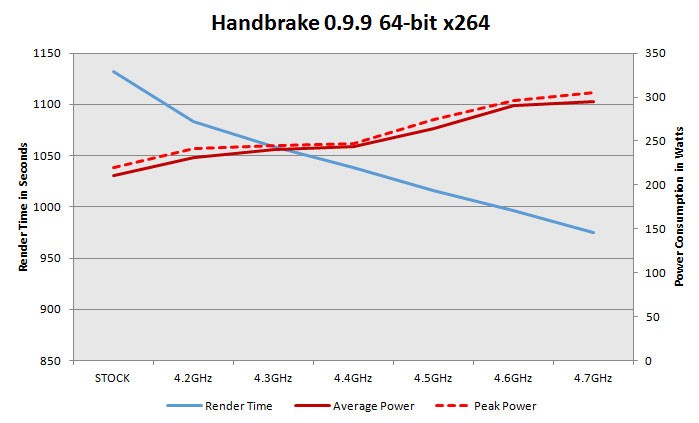
Handbrake winds up being the worst case scenario for the FX-8350 because it flat out redlines the CPU. Peak power and average power are practically the same, and consumption increases by almost 100W. I'm keen to point out that an aggressive overclock on Devil's Canyon can raise power consumption by as much as 70W or more, to say nothing of the nearly 200W overclocking Haswell-E can gain. Render times have an extremely steady decline as clock speeds increase, though. You can pretty much just pick a point on the curve you want to hit.
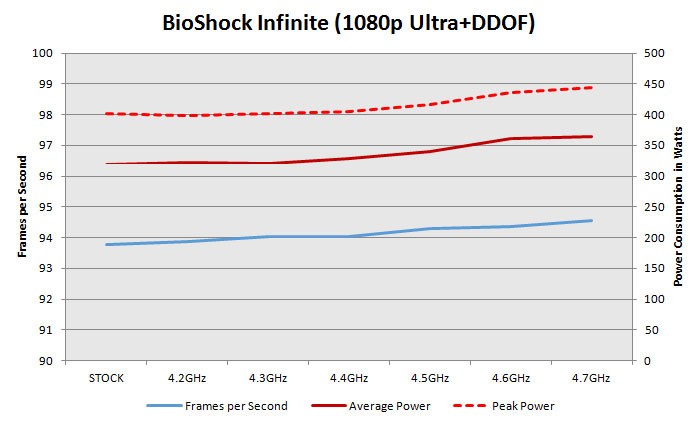
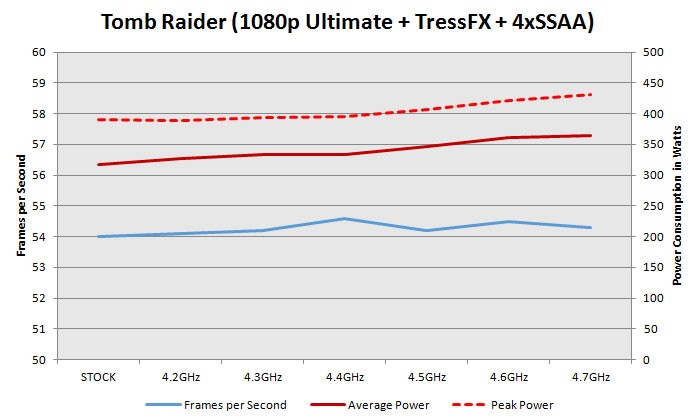
If the FX processors are bad gaming chips, that's not presenting itself here. An increase of 700MHz nets maybe 1fps in BioShock Infinite, and Tomb Raider just plain doesn't care. Power consumption does increase, but again, it's modest.
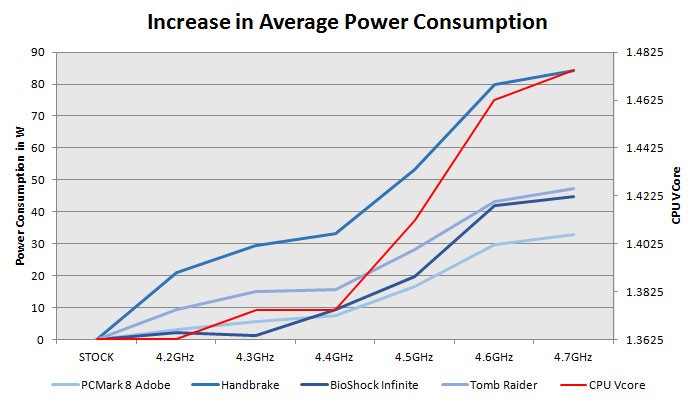
When we take a look at how much average power consumption increases, we can see where the inflection point on this particular FX-8350 is: 4.4GHz. After that, it starts requiring substantial increases in Vcore to hit higher clocks. Up to that point, power consumption increases are pretty modest, though even after that, only Handbrake really gets in the thick of it. If you can stay under 1.4V on the core, you're probably doing okay.
While chips like the FX-9590 and FX-9370 and their 220W TDPs don't paint a rosy picture for AMD, mainstream workhorses like the FX-8350 catch kind of an unfair rap. The latter is a fine performer and overclocker, and power consumption isn't horrifically higher than Intel hardware.
AMD's mainstream star: FX-6300
So far we've come away more impressed than we expected. If power consumption isn't a deal-breaker for you, AMD's Vishera CPUs can provide stellar bang for the buck. Next up we're putting the screws to AMD's true mainstream champion, the $100 FX-6300.
I should note that both the FX-8350 and now FX-6300 have responded very well to liquid cooling and never peaked higher than the mid-50s. They've both been fairly solid overclockers as well.
And again, we are using PCMark 8's Adobe Suite, Handbrake, BioShock Infinite, and Tomb Raider for benchmarking and power consumption testing.
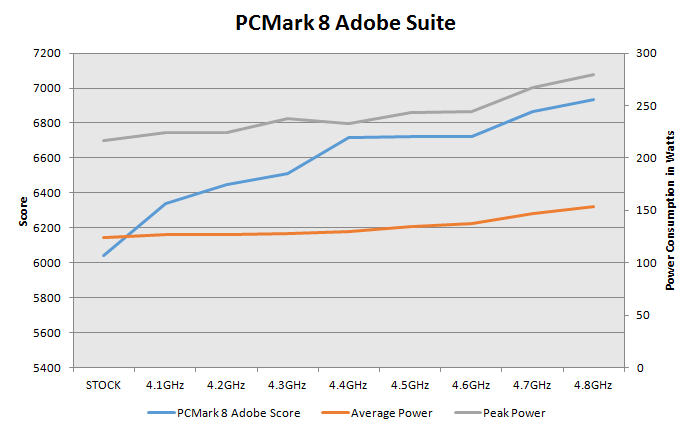
PCMark 8 shows a mostly clear trending with an odd flatline from 4.4GHz to 4.6GHz. Peak power climbs noticeably, while the average is much more conservative. Incidentally, the PCMark 8 Adobe suite doesn't seem to benefit meaningfully from the extra module (two integer cores) in the FX-8350; the FX-6300 posts roughly the same scores at the same clocks, but draws less power in the process.
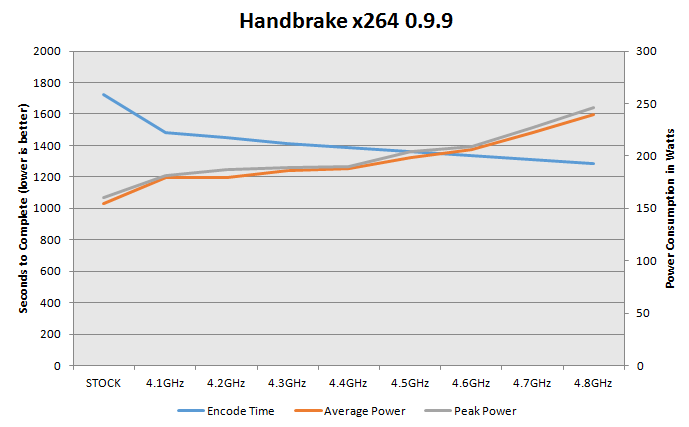
Handbrake, on the other hand, will use every last core and clock it can get its hands on. Overclocking the FX-6300 from its stock speeds all the way up to 4.8GHz introduces massive performance gains; at 4.8GHz, our benchmark takes roughly 2/3 the amount of time it takes to run at stock. Because Handbrake is the most CPU-dependent task in the suite, it also drives up power consumption considerably. Even then, power only increases about 80W for the blistering overclock.
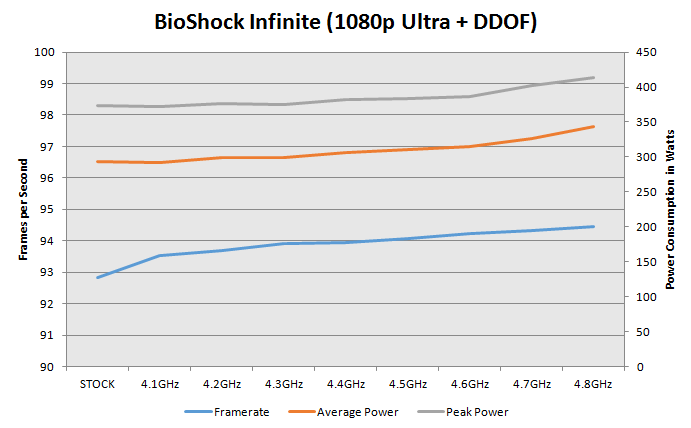
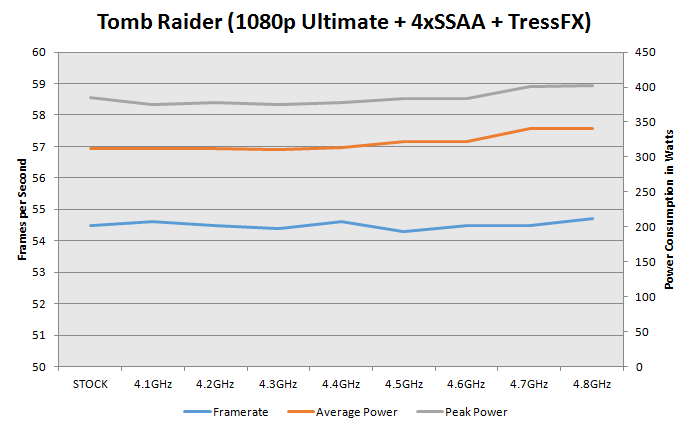
BioShock Infinite receives modest gains in performance, but Tomb Raider is flat. Once you've confined the bottleneck to the GPU, CPU speed becomes less relevant. At stock speeds, the FX-6300 is plenty to get the job done, and power consumption in gaming doesn't increase appreciably as the result of overclocking.
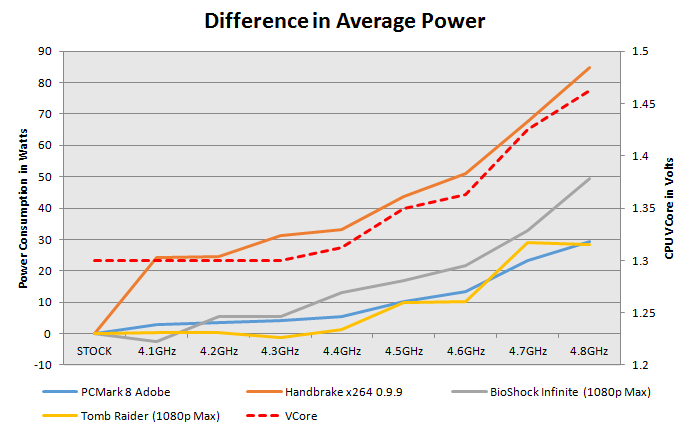
Much like the FX-8350, going past 4.4GHz required greater and greater increases in voltage on the FX-6300, but the headroom is there. I suspect on a beefier motherboard, 4.9GHz or 5GHz would've been attainable without hitting a heat wall. Actual power consumption only really takes off at about 4.6GHz, though, excepting the entirely CPU-bound Handbrake, which sees the largest increases in power draw.
It's easy to go on and on about how fast and efficient modern Intel processors are, but while AMD's Bulldozer-derived architectures do underwhelm somewhat, they're not actually bad and certainly powerful enough for any modern task or game. At $100, the FX-6300 is an excellent alternative to Intel's clock-locked lineup. Power consumption does increase, but it's not as dramatic as you've heard, and the performance is there.
Enthusiasts looking for something to extract performance out of below the price tag of Intel's Core i5-4670K and i5-4690K would do well to check out AMD's FX-6300.
